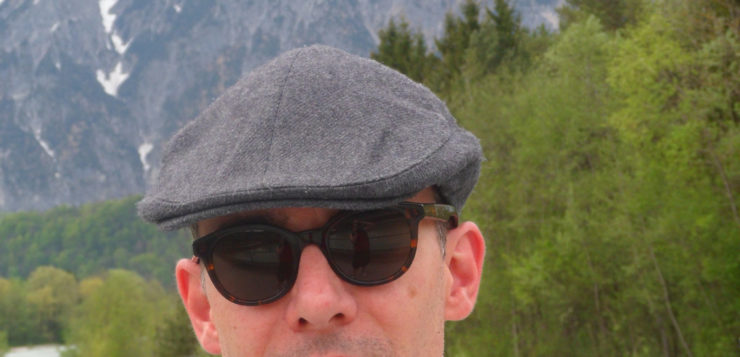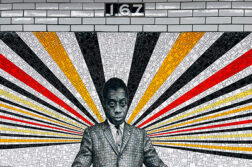“Do you need anything off my laptop?” he asked.
It was a pointedly sardonic question.
A year into our relationship, we’d attempted what no new couple wisely undertakes simultaneously: starting a new job (me), leaving one behind (him), and moving in together (both of us) in an unfamiliar city 1,200 miles away. A month later, we’d broken up. He packed his belongings from drawers we’d luxuriated in filling two weeks earlier, into a suitcase bought on another continent.
There was nothing of mine on the laptop except for a pornographic DVD, watched together the previous week. His sarcasm overrode any impulse I felt to reclaim it now. He pulled the suitcase out the door. I stood watching his taxi bump up the hill toward the airport. I might have swallowed my pride and asked for it had I known that pornography, or erotica of any sort, could not be bought or downloaded at any price in this city we’d only known for four weeks. Casually browsing main street newsstands, my best option, it seemed, was a slick, expensive Italian edition of men’s Vogue, at the cash equivalent of a twenty-mile taxi ride. You know it when you see it, Supreme Court Justice Potter Stewart famously said about pornography, but do you? After all, as I discovered, one man’s Italian men’s Vogue is another man’s erotica.
Vogue and I went back a ways. My mother, a clothes hound, kept a subscription. As a child, I’d delved into her basket of magazines, ogling images of people in exotic worlds both unreal and more real than ours. I gazed at their eyes (which gazed back, full of half-evoked scenarios, stories to be elaborated). At twelve, I rarely read Vogue’s articles but I scoured the advertisements, dog-earing pages, imagining their isolated scenarios, their bodies in contact, or conversation.
The early 1980s ushered in a series of advertisements for Paco Rabanne’s Pour Homme, portraying lone men in various states of undress: posing with mussed hair in half-lit sailboat cabins, draped in disheveled sheets in an artist’s studio bed, towel-waisted, fresh from the shower in a midtown Manhattan musician’s loft, bent over typewriters and bottles of whiskey, topless on the decks of beach cabins. Whatever the immediate setting or degree of undress, the man invariably held a phone to his ear, conversing with an invisible lover, their dialogues printed in a sidebar. Coy, conspiratorial, their discourse’s innuendo falling just short of sexual explicitness, leaving it easy to imagine his invisible partner wasn’t necessarily female, the ads openly invited extrapolational narration―who were these men, from whose romantic lives authentic, random private scenes were snatched, made public?
“For men, the eye is a sex organ,” French writer and translator Jean Pavans wrote. The real pleasure, and frustration, lay in switching back and forth between the magazine’s pages, connecting their images―the Paco Rabanne ads set in luxuriantly sloppy Manhattan lofts, with their implied partner on the other end of the phone line. One wanted somehow to connect their bodies, which meant flipping back and forth between pages―or tearing them out, placing them side by side. Sexuality was something in two-dimensional worlds of which I was an observer, in a slow line of what film theorist Laura Mulvey dubbed scopophilia.
I walked one hot July day to a shopping center selling movie magazines. Magazine stores in 1980s suburbs contained racks of magazines, ranging from hunting to fishing, jogging (weightlifting remained professional―monstrous men, usually grimacing), or fashion. Such stores took every possible interest they imagined a person might have, translating them into glossy images, set on shelves facing outward. It was like browsing through icons on iTunes publicly, with the difference that you lift the magazine from the shelf to look inside―a gesture itself making your interests publicly obvious. On a cover, Indiana Jones, having just escaped the Temple of Doom, shirt ripped to shreds, wielded a giant machete. I stared, dutifully reading the accompanying text, then went home to pull out a thumb-sized photo in the Guinness Book of World’s Records, printed on the low-grade paper available to school children ordering from a book club, showing Arnold Schwarzenegger, encyclopedically catalogued among other human oddities and achievements. Setting Indiana on one knee and Arnold on the other, as if to introduce them, I placed my hand in my lap, between the photos of the two hunky men, and imagined them together. I felt a tingling sensation.
Gentlemen’s Quarterly was vaguely respectable. In the age of Calvin Klein, Rambo, Soloflex and Nautilus machines, images implied lifestyles as much as sex itself. The black-and-white photo of a man looking toward his clavicle, shaking sweat from his hair, below which was printed a warning to readers of the dangers of dehydration: it seemed only polite to read the article after making prurient use of the image. Later came fitness magazines leading me to work out, wishing myself onto the same plane as those images.
Sexuality, on its own, is a strange, fluid thing, drawn toward places we don’t expect it to go, over uneven terrain invisible till it flows into an unseen trench or pool. Like an unlevel floor seemingly level until a water cooler breaks and spills into previously unseen hollows. Porn, in comparison, clean, more or less precise, odorless, self-timed, ideal, generally always turns out the same in the end.
That first year abroad, home in the United States for holidays, I bought a pornographic DVD. When a new lover found it, jealous of “the other men,” he melted it over the stove. I watched, mesmerized, but not especially disturbed to see it go.
 J.M. Parker’s fiction has appeared in ISLE, Frank, Gertrude, Segue, Foglifter, Chelsea Station, SAND and Callisto, among other journals, been reprinted in Best Gay Stories 2015 and nominated for a Pushcart Prize. His first novel, A Budget Traveler’s Guide to the Museums of Europe, was published in 2017 by Lethe Press.
J.M. Parker’s fiction has appeared in ISLE, Frank, Gertrude, Segue, Foglifter, Chelsea Station, SAND and Callisto, among other journals, been reprinted in Best Gay Stories 2015 and nominated for a Pushcart Prize. His first novel, A Budget Traveler’s Guide to the Museums of Europe, was published in 2017 by Lethe Press.






